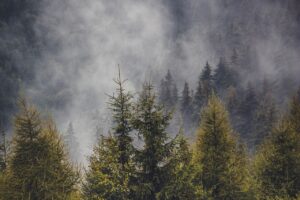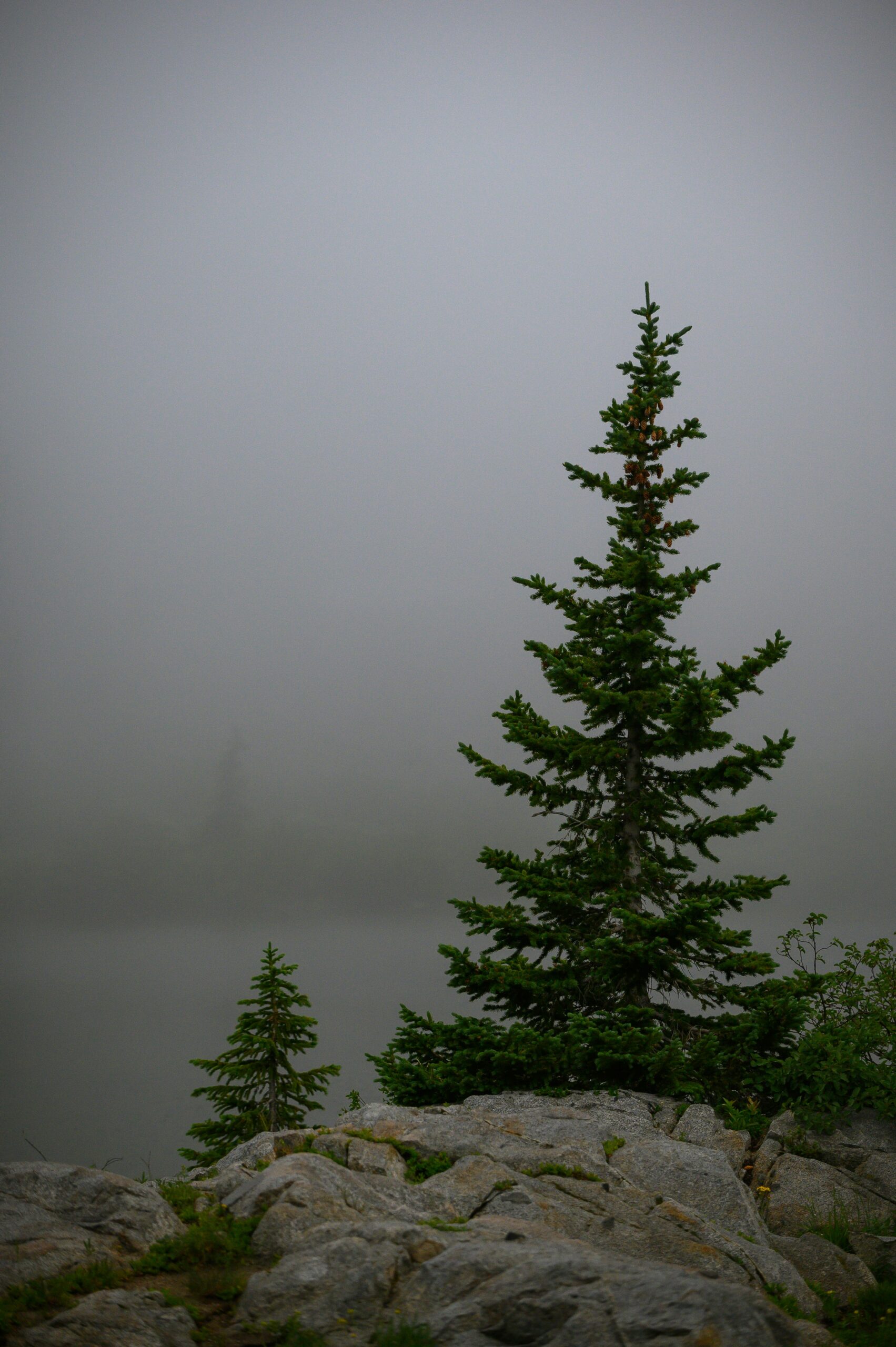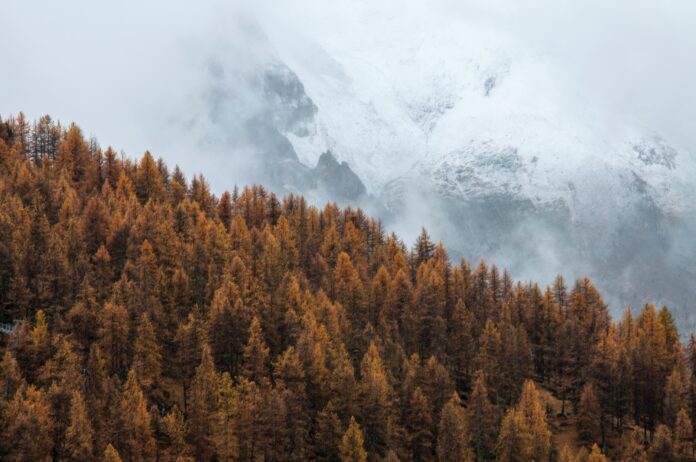Larch trees are a popular autumn sightseeing event. Every year, thousands of people hike into the Rocky Mountains to see these magnificent trees as their needles turn from green to gold. Have you ever wondered why?
We all know from elementary school that the leaves change their colors in autumn. Then the wind whisks them off their branches and deposits them on the forest floor. This is because the tree is entering dormancy, which is almost like plant hibernation. The tree slows down its living functions because the living conditions of winter are too harsh. It is common to see this in all perennial leafy plants, but have you ever seen the spindly needles of a conifer blush orange and drop to the ground? Such is the case of the larch tree, which sheds its needles just like any leafy plant.
Coniferous vs Deciduous
“Coniferous trees have needles that stay on all year, and deciduous trees have leaves that fall.” This common elementary textbook definition does apply in most cases, but it does have some exceptions like the larch tree.
However, larch trees have needles that make the annual descent to the soft forest floor along the leaves of the aspens, birches, and poplars. In order to categorize this popular autumnal hiking attraction, it is necessary to define these terms further than the quick elementary school lesson that teachers gave before going on a community walk around the neighborhood.

Coniferous trees are characterized by their sharp needles and are also known as evergreen trees (although not all evergreens are “ever green”). A layer of waxy material coats the needles, which helps prevent transpiration (the evaporation of water through leaves). Conifers also have a lower surface area, which reduces their wind resistance. Since their outer layers are so dense and thick, it is easier for conifers to live in harsh climates such as the mountains.

In stark contrast, deciduous trees have broad leaves that help them catch the sunlight in order to undergo photosynthesis. However, these trees have a hard time living in harsher climates like the mountains. This is due to high water and nutrient requirements for leaf maintenance.
Although it is far more common to find fallen foliage (plant leaves) in autumn from deciduous trees, the ability to shed is not exclusive to these leafy greens (or should we say, leafy orange-yellow-red-browns). Losing leaves has many advantages, and the larch certainly uses some of these to help it survive in its mountain habitat.
Why do larches lose their needles?
Some plants shed their leaves every fall in order for the tree to enter dormancy. It takes less energy to maintain a bare tree in the winter, especially a harsh Canadian one where the temperature can dip below -30°C. New leaves or needles bud and unfold in the springtime, when the environment is warm and suitable enough for leaves to grow again. But what are the advantages of doing this for larches specifically?
- Less wind resistance
- It is extremely windy in the winter, especially in the mountains where larch trees are found
- It is crucial for these trees to have small surface areas and be very streamlined. Otherwise, the trees would be blown over like dominoes!
- Losing the needles allows more wind to blow between the branches.
- There’s less water
- In the Rockies, it snows during winter. Water reaches the mountains in a frozen form, which cannot be absorbed into the soil or the trees.
- The winter climate is dry and cold, which makes it difficult for larches to maintain moisture conditions. These conditions are required for their needles to function.
- It snows a lot in the mountains
- The weight of nearly five months of continuous snow accumulates. Unlike rain, snow doesn’t slide off surfaces.
- Trees need a lot of structural strength to be able to hold up so much weight.
- If larches lose their needles, they avoid the extra surface area for snow to land on. This helps prevent branch breakage.
So… are larches deciduous or coniferous?
So all these advantages are fine and wonderful, but at the end of the day, we still haven’t determined which category a larch falls into: deciduous or coniferous?
The answer is… both!
Larches are considered deciduous conifers. So they fall (no pun intended) into a little bit of both categories. These hiking attractions have coniferous needles but they do turn colors and drop from branches in autumn. This deciduous characteristic is the larch tree’s adaptation to its harsh environment.
TL;DR
Larch trees are deciduous conifers – that is, they’re coniferous trees that shed their needles in the fall as an adaptation to their climate. Shedding their needles helps: prevent the whole tree from getting blown over by winds; prevent branches from snapping from the weight of snow caught by leaves; and maintain moisture in the tree required for it to continue living through dormancy.


